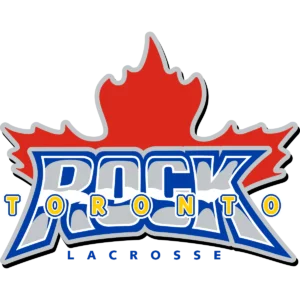Land Acknowledgement: The Toronto Rock office is situated on the Traditional Territory of the Mississaugas of the Credit, Neutral, Huron-Wendat, and Haudenosaunee peoples. They are the rightful caretakers and titleholders of this land, which is covered by the Dish with One Spoon Wampum Belt Covenant, an agreement between the Haudenosaunee, Anishinaabe, and Mississaugas to share and protect the resources around the Great Lakes. This land is now home to many diverse First Nations, Métis, and Inuit peoples. We honour and respect the four directions, lands, waters, plants, animals, and ancestors that walked before us.
Known as a “Medicine Game” and the “Creator’s Game” to the original people of Turtle Island (North America), the game of lacrosse is incredibly special to the Indigenous peoples of this land. To the Algonquin, the game is called Baggataway; and to the Iroquois it is called Tewaarathon; in the 1630’s a French settler coined the name “la crosse”; it is a stickball game with a rich history in North America.
Lacrosse is an integral part of Indigenous communities, with the story of how the game was gifted by the Creator passed down orally from Elders to the next generation. According to the Haudenosaunee, the “Great Game” was played between the four-legged animals and the winged animals and was entertainment for the Creator. The game was gifted to the people by the Creator, a means of entertainment for the Creator but also a form of conflict resolution and medicine. Originally, the game had only two rules – no touching the ball with your hands and no boundaries. Field lacrosse most closely resembles the traditional game.
A demonstration of lacrosse was given by the Caughnawaga Indians in Montreal in 1834, which resulted in growing interest by the European settlers and the colonization of the game. By the 1850’s a dentist named William George Beers aimed to “civilize” the game by adding rules and structure (he described the game as “barren of laws”). He also petitioned for the game to be named Canada’s National Sport, which led to the formation of the National Lacrosse Association (predecessor of the Canadian Lacrosse Association and now Lacrosse Canada) in 1867, and wrote the official rulebook, “Lacrosse: The National Game of Canada”.
Beers “sold” the game of lacrosse as part of the Canadian identity, taking a team on a promotional tour of Europe handing out literature to spectators about the benefits of emigrating to Canada. However, the Indigenous heritage of the sport was not written about by Beers, instead he segregated the game in his “rule book”, disallowing Indigenous players from playing on non-Indigenous teams. The National Lacrosse Association also banned Indigenous players from joining any of their clubs in 1880. Ironically, in 1889 the sport is taught to Indigenous youth at Residential Schools to assimilate them into the Canadian culture.
The dominant form of lacrosse today in North America is the game of box lacrosse/indoor lacrosse, which was introduced in 1931. While its origins are not attributed to anyone specifically, Lacrosse Canada attributes its inception to promoters looking to capitalize on the popularity of hockey and the arena venues. By the mid-1930’s the box version had become more popular than the field version and the official sport of Lacrosse Canada. In 1994, Canada’s “National Sport Act” names Hockey as Canada’s National Winter Sport and Lacrosse as Canada’s National Summer Sport.
Resources
Beers, G.W. (1869). Lacrosse: The National Game of Canada. Montreal: Dawson Brothers.
Downey, A. (2018). The Creator’s Game: Lacrosse, Identity, and Indigenous Nationhood. Vancouver: UBC Press
Claydon, J. [Editor]. (n.d.). Origin & History. World Lacrosse. Retrieved from https://worldlacrosse.sport/about-world-lacrosse/origin-history/
Edwards, K. (n.d.). Sport. Indigenous Peoples Atlas of Canada. Retrieved from https://indigenouspeoplesatlasofcanada.ca/article/sport/
Influence of Sport on the Arts, Literature, Music and Cultural Identity: The lacrosse stick. Toronto: Ontario Heritage Trust. Retrieved from https://www.heritagetrust.on.ca/en/pages/our-stories/exhibits/snapshots-of-ontarios-sport-heritage/influence-of-sport-on-the-arts-literature-music-and-cultural-identity/the-lacrosse-stick
Ireland, M. [Wilfrid Laurier University]. (2021, March 5). The Creators Game – A Discussion with Author Allan Downey [Video]. YouTube. Retrieved from https://www.youtube.com/watch?v=iAjOCHf4okw
Lee, A. & Phillips, A. (n.d.). The Creator’s Game. New York: Thompson Brothers Lacrosse. Retrieved from https://thompsonbrotherslacrosse.com/history-of-lacrosse/
Lyons, O. [USA Lacrosse]. (2018, November 15). The Great Ball Game by Oren Lyons [Video]. YouTube. Retrieved from https://www.youtube.com/watch?v=jFGE4-6Xx-A
Mitchell, M. (n.d.). Lacrosse “A Gift for People of Canada”. Ottawa: Lacrosse Canada. Retrieved from https://www.lacrosse.ca/content/History-of-Lacrosse
Oneida Indian Nation. (n.d.). A Lacrosse Legend. Central New York: The Oneida Indian Nation. Retrieved from https://www.oneidaindiannation.com/a-lacrosse-legend/
Whitecrow, JL. [National Film Board of Canada]. (2018). Urban. Indigenous. Proud: That Old Game of La Crosse [Video]. NFB. Retrieved from https://www.nfb.ca/film/urban-indigenous-proud-that-old-game-la-crosse/


